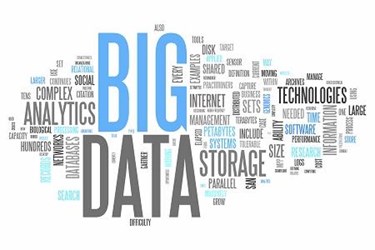Combining Human-Centered Design And Big Data In Pharma

By Shannon Fitzhugh-Mengers, Ph.D. and Mark Diamond, MBA
Data is exponentially increasing while habits remain steeped in legacy systems and the past when it comes to safety and pharmacovigilance (PV) in the pharmaceutical ecosystem. Old processes and a historic approach cannot meet future requirements. Growing concerns, such as unstructured data and the emergence of patients as consumers, reveal themselves on a daily basis as new products are brought to market and new regulations come forth. The explosion of social media and immediate patient feedback won’t allow for slow, incremental improvements using current process-excellence methods. These problems require a revolutionary approach. A proactive approach and clear perspective around a product’s human impact are both relevant and necessary in providing insight into the future of drug safety. The rapidly changing landscape and volume of data flowing into pharmaceutical organizations requires real transformation. As such, human-centered design might just be the answer to creating a safer world.
Big Data, Bigger Challenge

 Within pharma's Big Data struggle is the challenge of balancing patient safety with the needs of caregivers, practitioners, manufacturers, and regulatory agencies. The only way to accomplish such a monumental balancing act is with a holistic view of the lifecycle of a compound or device – from discovery through patient experience. This view can be achieved only by understanding people’s needs using in-depth behavioral research – the backbone of human-centered design. Using the insights from research, human-centered design practitioners use the principles of simplicity and empathy to align data, people, process, technology, and environment. With the resulting holistic understanding of a compound or device lifecycle, a strategic direction may be realized.
Within pharma's Big Data struggle is the challenge of balancing patient safety with the needs of caregivers, practitioners, manufacturers, and regulatory agencies. The only way to accomplish such a monumental balancing act is with a holistic view of the lifecycle of a compound or device – from discovery through patient experience. This view can be achieved only by understanding people’s needs using in-depth behavioral research – the backbone of human-centered design. Using the insights from research, human-centered design practitioners use the principles of simplicity and empathy to align data, people, process, technology, and environment. With the resulting holistic understanding of a compound or device lifecycle, a strategic direction may be realized.
Big Data for pharma can be broken into two major categories: structured clinical or research data (i.e., databases of regimented and well-monitored research), and unstructured, real-world data (i.e., from assays, electronic medical records and medical literature). Currently, structured clinical data is well managed individually, but aggregating these sources to look at the big picture is hindered by lengthy time frames for the translation between systems.
Recent advances in technology hint at the ability to automate activities like data translation across databases. Combined with other advances in globalized standards and guidelines, such as IDMP, data can be refined into a more useable format for collating and categorizing information. However, automated data curation and classification are in their infancy. While automation should reduce the timelines for these activities and move the industry to a more proactive approach to drug safety, these technologies are years away from being a complete solution. So, how do companies improve the current big-data landscape while planning for the possibility of technological advances?
The answer lies within human-centered design.
Regarding unstructured data, the problem lies in data access and the time-consuming hand coding for analysis. There are opportunities for improvement in addressing these sources using existing technologies that companies don’t currently leverage. Human-centered design can help companies determine how to best leverage current technology, such as Apple’s ResearchKit and CareKit, to make adverse event reporting easier and more feasible. Increasing the likelihood of reporting an adverse event through the use of personal technology devices increases the amount of data PV specialists have for decision making. This ultimately increases the likelihood of detecting potential adverse reactions. Coupled with additional data from wearable devices, like FitBit and Apple Watch, signal detection stands to benefit from robust contextual information. Dealing with all of the data from such a rich resource is another concern that human-centered design can help solve.
Just as the emerging technologies in the automation of database translation are on the horizon, so too are the technologies that can process the wealth of unstructured health data. As these technologies are implemented, it will be important for companies to prepare for the fundamental organizational shifts the technologies will undoubtedly create. Human-centered design will produce a roadmap for the future.
Why Human-Centered Design?
The incremental improvement model employed by many companies will not be enough to bring the pharmaceutical industry up to speed with Big Data. In the near future, the industry will need an overhaul and complete redesign of its data curation, monitoring, and analysis practices. Human-centered design has a multifaceted role in the strategic implementation of solutions for Big Data in pharmaceuticals. At the outset, human-centered design aligns stakeholders, business leaders, and operational leaders with common goals and a common approach to solutions. This includes the definition of roles and responsibilities for all involved in a collaborative, iterative environment.
With goals and responsibilities set, human-centered designers seek to understand the audience and craft messaging according to how people recognize and understand information. Whether through face-to-face conversations or email campaigns, behavioral scientists and designers can support the communication of strategic opportunities and plans to ensure a smooth transition and adoption.
Understanding the current state of the situation is essential to crafting a plan for change. Design professionals, specifically those using a human-centered methodology, craft visual representations that communicate the current state of the Big-Data problem, identifying pain points, bottlenecks, and areas of risk for the company. Understanding what works and what doesn’t in the current state is essential to facilitating data sharing across the company. Building this understanding also highlights the technology, data and human infrastructure of the company, confirming a solid foundation or providing recommendations for creating one.
Once foundational elements and current processes are mapped and well understood, the design of the future begins. Human-centered design combines research and insights with business and technology requirements to produce a future state that encompasses the vision laid out by stakeholders. In general, the future of Big-Data analytics in pharmaceuticals needs to take into account a broader set of inputs, like EMRs (electronic medical records). The challenges brought by these new sources will need to be incorporated into the design to ensure their benefits can be realized. Consideration of a broader audience such as practitioners, patients, and regulatory offices will also be required. These new audiences require different levels of information at different depths.
No Time to Waste
The rate at which data is produced is accelerating exponentially. Today, the amount of medical data doubles every 18 months. By the year 2020, it is expected that the amount of medical data will double every three months. Human-centered design can help uncover solutions applied in other sectors that will translate well to pharmaceutical organizations, highlighting commonalities among methods across verticals. Predictive analytics and forecasting models could provide valuable insight into potential situations for adverse events to be monitored more closely. These types of methods get the pharmaceutical industry one step closer to the proactive model of patient safety while taking into account the impact on people working within the system.
About The Authors
Shannon Fitzhugh-Mengers and Mark Diamond are lead consultant and VP of client strategy, respectively, at research and design consultancy Electronic Ink.
